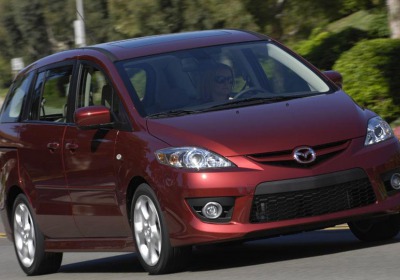Mazda pushes fuel economy, plans a new engine by 2011
Mon, 24 Aug 2009Mazda's push to increase fuel economy across its model line will include a new range of gasoline engines and may involve the introduction of diesel and idle-stop technology in the United States.
Mazda is aiming to increase fuel economy across its global lineup by 30 percent by 2015.
The first stage of that transformation will include the introduction of a more fuel-efficient four-cylinder powertrain in 2011.
Big boost in mpg
Seita Kanai, head of Mazda Motor Corp.'s r&d, said a redesign of Mazda's best-selling 2.0-liter four-cylinder engine with a new six-speed automatic transmission would see city fuel economy increase to 32 mpg from 22. Highway fuel economy would increase to 42 mpg from 32.
"We want to provide this technology to all owners, not just through a few eco-friendly vehicles," Kanai said at a media briefing.
Mazda did not say which engine or vehicle would be the first to market with the increased efficiency. But Robert Davis, senior vice president of product development and quality at Mazda North American Operations, said the new powertrains cannot be retrofitted to an existing product line.
Mazda also is studying bringing its next-generation diesel engines to the United States. Currently, none of Mazda's diesels are mated to automatic transmissions, a feature generally regarded as necessary in the United States. Mazda also sees significant marketing hurdles in selling diesels to U.S. customers.
Mazda is looking at bringing its idle-stop technology to the United States, Davis said. But the automaker is having a difficult time marketing the fuel-efficiency benefit, mainly because EPA testing does not take idle-stop's efficiencies into account.
Candidates for engines
Given Mazda's product cadence, the redesigned MX-5 convertible or Mazda5 small minivan likely would get the new four-cylinder engines first. The entire model lineup will be equipped with the new engines by 2015, Kanai said.
The 30 percent improvement in fleet fuel economy does not include improvements from idle-stop, regenerative braking or hybrid powertrain development, he said. And although hybrids are a part of Mazda's future, such technology is minor compared to the company's concentration on improving internal combustion engines.
The automaker also is concentrating its r&d resources on rotary engines. The next-generation 1.6-liter rotary is expected to have a "greater than 30 percent" fuel economy improvement while saving weight, Kanai said.
Mazda will not seek in-house improvements in V6 engines, which are supplied by Ford Motor Co. Those powerplants represent a small percentage of total Mazda volume.
By Mark Rechtin- Automotive News

